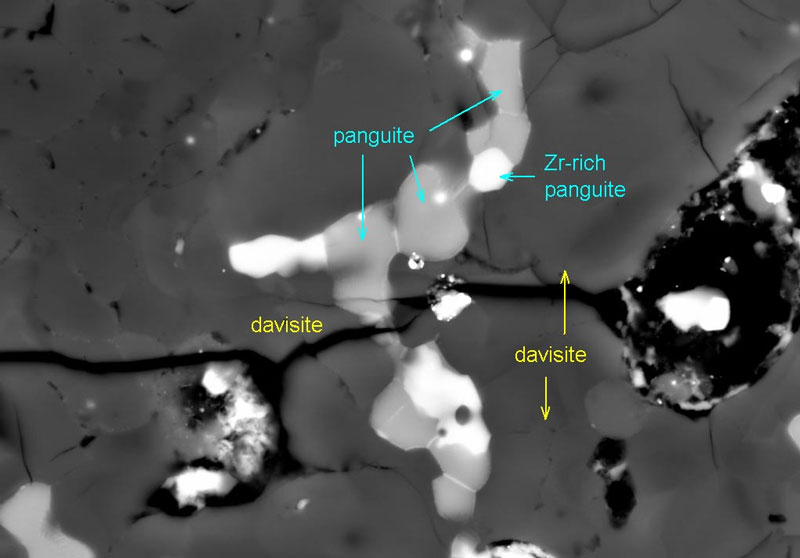The mystery inside the meteorite pattern that year fell to earth in 1969
After decades of conducting research and analysis of meteorite samples Allende once fell in the area of Chihuahua state, in northern Mexico in 1969, scientists discovered a completely new mineral called panguite.
Panguite is said to be one of the oldest minerals in the solar system, dating back about 4.5 billion years. Of the refractory group, panguite is more likely to form under extremely harsh conditions with the very high temperatures of the early solar system.

Panguite - a new mineral found in the Allende meteorite model. (Photo: Caltech / Chi Ma)
The International Mineralogical Association has approved and recognized this new mineral under the name Pan Gu - the god of Chinese mythology that created the world by separating the yin and yang, forming the earth and voting. God.
Using scanning electron microscopy (SEM), scientists found the chemical composition and crystal structure of panguite completely new. 'This discovery is particularly interesting because it was a material that people had never known before,' said Chi Ma, a senior scientist at Caltech, speaking in the July issue of American Mineralogist magazine .
The Allende meteorite of the largest carbon chondrit group found on Earth, is a rare primitive meteorite left over from the early planet formation, possibly originating from a small planet in the middle of orbit. Mars and Jupiter.
The study of panguite as well as other components of meteorite Allende contributed to providing insights into the origin of the solar system, Chi Ma said. In fact, the team discovered nine new minerals, including panguite, in the Allende universe.
Reference: Livescience
- 5 NASA steps dealing with meteorites crash into Earth
- The 50m meteorite may crash into Earth later this year
- The 4.6-billion-year-old meteorite fell on the dog stall
- Found a meteorite pattern falling in America
- The thousand-dollar meteorite broke through the roof of a Thai family
- A 4.5 billion year meteorite pierced the ceiling
- The heart of the paratrooper almost missed the meteorite
- The meteorite is equivalent to 5000 tons of explosives falling into Puerto Rico
- Huge meteor fell into the Atlantic Ocean
- The first meteorite plunged into Earth during the year
- A giant meteorite just flew over Earth
- Decipher the mystery of the meteorite
 Van Allen's belt and evidence that the Apollo 11 mission to the Moon was myth
Van Allen's belt and evidence that the Apollo 11 mission to the Moon was myth The levels of civilization in the universe (Kardashev scale)
The levels of civilization in the universe (Kardashev scale) Today Mars, the sun and the Earth are aligned
Today Mars, the sun and the Earth are aligned The Amazon owner announced a secret plan to build a space base for thousands of people
The Amazon owner announced a secret plan to build a space base for thousands of people The largest moon of Saturn contains 1 layer of liquid water
The largest moon of Saturn contains 1 layer of liquid water  The Soyuz spacecraft brought three astronauts back to Earth
The Soyuz spacecraft brought three astronauts back to Earth  China will launch larger spacecraft
China will launch larger spacecraft  Find the oldest Earth's crater
Find the oldest Earth's crater  The Milky Way is vibrating like a bell.
The Milky Way is vibrating like a bell.  For the first time witnessed a star destroying the planet
For the first time witnessed a star destroying the planet 